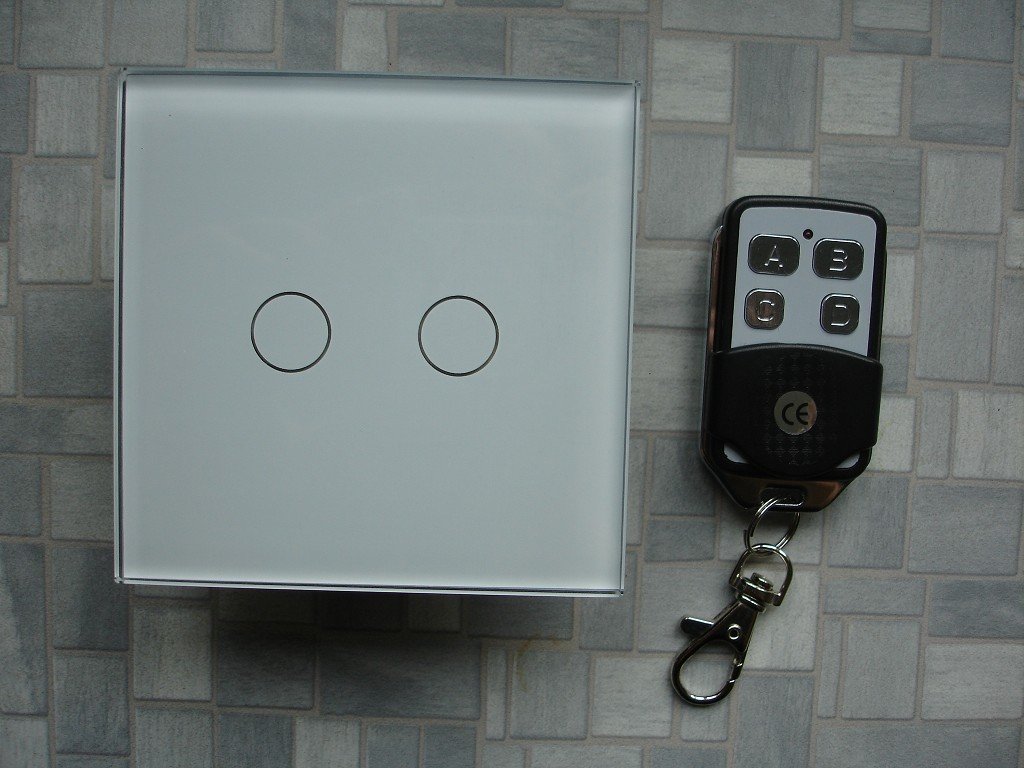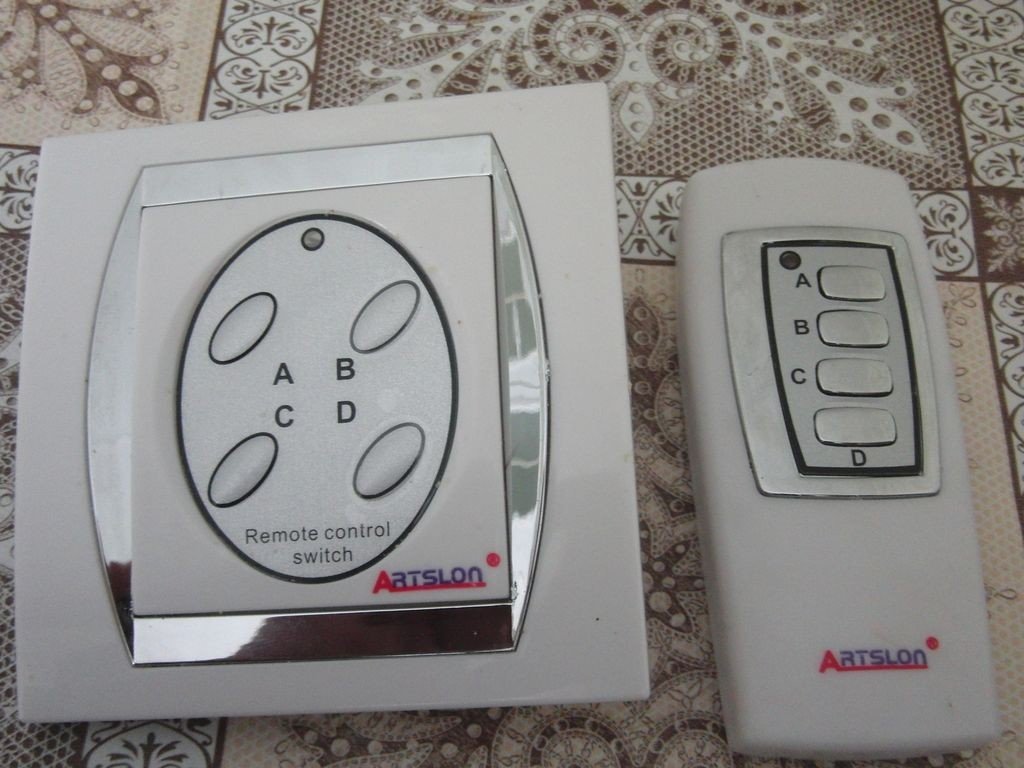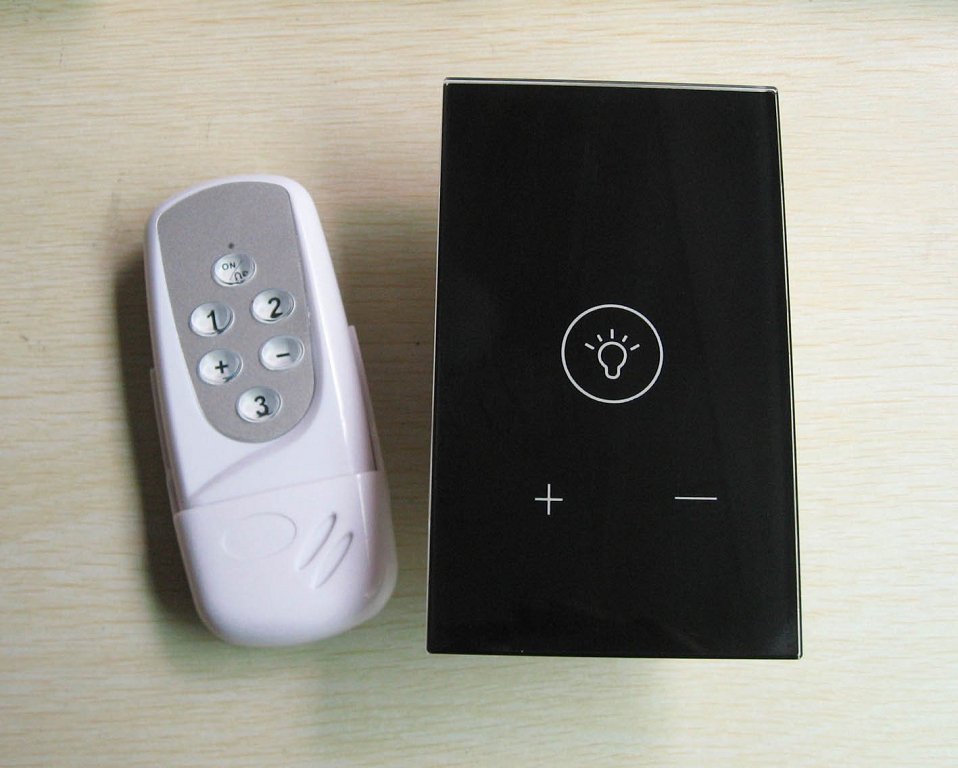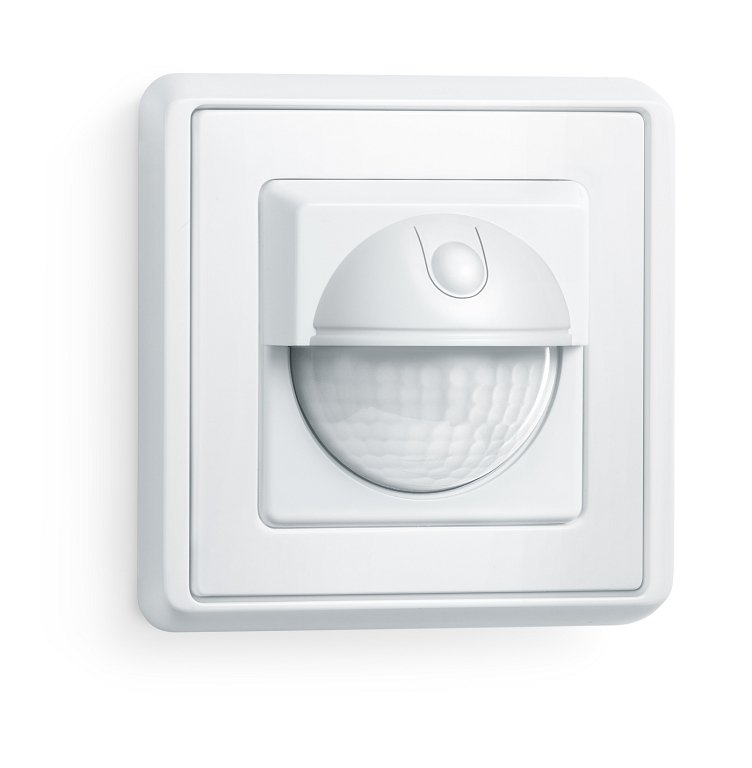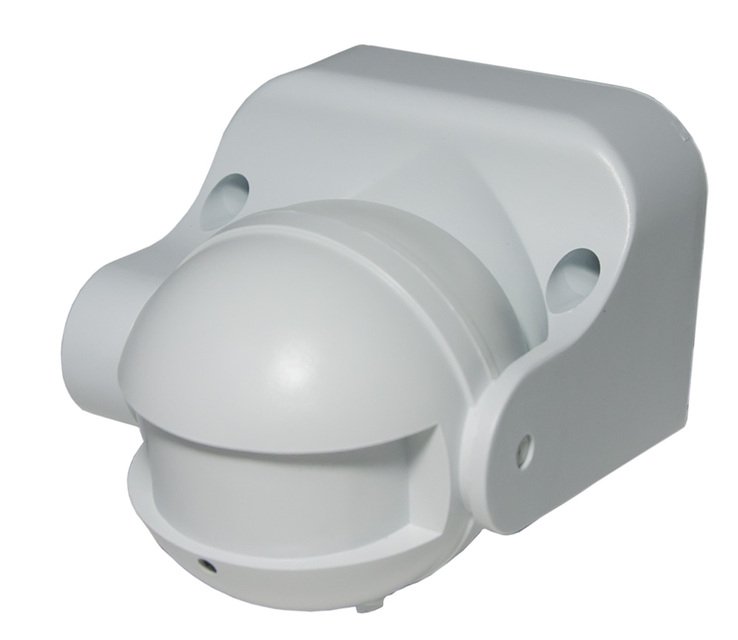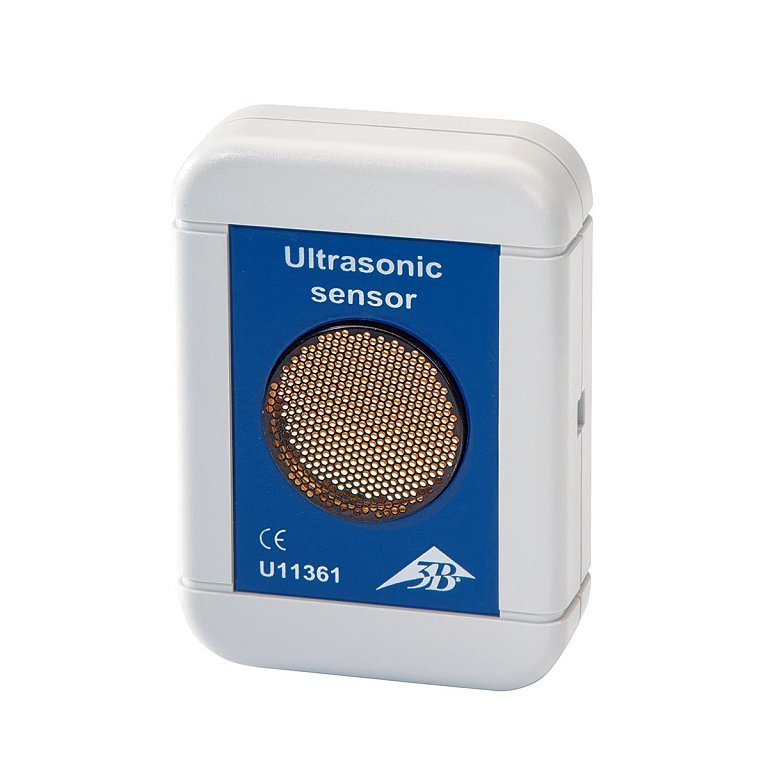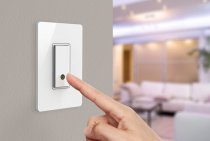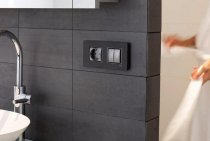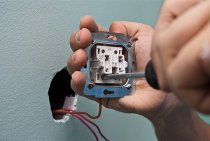To increase comfort when using lighting devices, a remote light switch is widely used. Such devices are equipped with a remote control and allow you to control the operation of lighting systems and individual lamps from a distance.
The design and principle of operation of the remote switch
The main elements that make up such a device are a remote control (RC) and a power unit equipped with a signal receiver. When using radio frequency remote control systems, they include a controller with which you can control the operation of incandescent, halogen, fluorescent or LED lamps. At the same time, it is possible to control both single lighting devices and large groups of lamps.
Depending on which of switches a command from the remote control must be transmitted, it gives a signal, additionally including a recognition code. This code is unmistakably accepted by the very device that is responsible for switching the electrical contacts of the desired lamp.
The distance at which remote control of lighting is possible, depending on the purpose and operating conditions of the switches, can be from 20 to 500 m.
Remote light switches can be controlled using infrared, ultrasonic, radio frequency and other devices.
The benefits of remote switches include:
- The ability to control the operation of lighting devices from a distance. This quality of switches is especially valuable when placing a significant number of lamps in large areas, as well as on the street.
- The ability to control the intensity of the glow of the lamps depending on the level of natural light in the premises. This technical solution allows to achieve significant savings in electrical energy, which is especially important when it is necessary to illuminate large areas.
- The ability to program the switch to turn on the lighting at a certain time (the so-called presence effect).
- Easy to install and operate.
- Multi-channel, allowing you to control a large number of lighting devices from one remote control.
- The power of electrical appliances, the switching of which can be carried out using the remote control, reaches 5 kW.
- Eliminates the need for additional electrical wiring, which ensures the operation of an ordinary wired switch.
- Increased electrical and fire safety of such devices.
The disadvantages of remote lighting control systems include their high cost, as well as the influence of metal structures on the operation of radio wave devices.
The remote light switch can use light or motion sensors to improve efficiency. It is also possible to control such a device using a computer or smartphone.
The most common type of control of this type of switches is the use of radio wave remotes. Infrared devices are used much less frequently.
Radio wave breaker control devices
For the operation of such devices, a controller is used that receives a signal from the remote control at a certain radio frequency and controls the operation of lighting devices.
Such systems allow the use of computers or smartphones to control the lighting system. In addition, RF control provides a long range.
By means of the radio switch it is possible to regulate illumination in the manual or automatic mode. A fixed switch or remote control can be used to turn the lamps on or off. To switch the electrical circuit in such devices, a power unit is used. Depending on the type of lighting devices, as well as their power, an electronic or induction transformer can be used as part of this unit.
The light switch with remote control can be located in any place convenient for the user, and its power unit can be located directly in the luminaire housing or in the switchboard.
infrared devices
Consoles that use infrared radiation to transmit commands to the control circuit of a remote switch are rarely used today. This is due to their rather significant shortcomings, such as a small radius of action, as well as the need to point the remote control directly at the switch.
In order to ensure the operation of such a device, a special lighting control unit is used. The advantage of using such equipment in an apartment is the ability to control lighting using an ordinary TV remote control.
Use of sensors
In addition to a portable remote control, various types of sensors are widely used to ensure the effective operation of remote switches. The most popular of these are infrared, microwave and sound devices.
Infrared motion sensors
They are the most common type of such devices. Their principle of operation is based on the closing or opening of an electrical circuit when the sensor detects the appearance of additional infrared radiation in its working area. This happens when a person or animal enters the sector.
The advantages of devices of this type include absolute safety for health, low cost, as well as economy and ease of use.
The disadvantages of such sensors include the dependence of the quality of their work on weather conditions, the possibility of false alarms or the lack of response to a person in thick winter clothes entering the coverage area, which limits heat transfer.
In most cases, such devices are installed at the entrance to the apartment or at the entrance, they are designed to automatically turn on and off the lighting on the landings and can significantly save energy.
Depending on the operating conditions, sensors can be selected that have a different degree of protection against mechanical influences, as well as moisture and dust. The degree of protection is indicated by the letters IP and the corresponding numbers, the value of the first of which indicates the protection of the device from the penetration of solid objects inside its case, and the second - water. Infrared sensors for light switches with remote control have protection of at least IP20.
As a rule, such devices have a range not exceeding 20 m. This is quite enough to ensure reliable operation of the light switch when entering the apartment. Another important parameter that significantly affects the performance and price of these products is the angle of coverage, which in the horizontal plane can reach 3600.
Microwave sensors
The principle of operation of these devices is based on the constant emission and reception of microwave electromagnetic signals. Based on the analysis of the received electromagnetic waves, the sensor determines the ingress of foreign objects into its area of responsibility and gives a command to close or open the power electrical circuit.Such devices are completely independent of weather conditions, however, when using them, false alarms are possible, in addition, electromagnetic radiation can adversely affect people's health.
Sound sensors
The principle of their operation is the same as that of previous devices. The difference lies in the fact that ultrasonic waves are used as perceived signals. The disadvantage of these products is their low sensitivity to slowly moving objects, as well as the negative impact of ultrasound on the behavior of some animals.
Another type of sound sensors include devices that are triggered by a sudden change in sound volume in the range familiar to the human ear. They are used to turn lights on or off in rooms with a voice or handclap. Most often, such voice switches are used in smart home systems.
Features of the choice of remote switches
Like most highly specialized products, the considered sensors can be used in combined devices that combine the advantages of each type. When choosing a remote light switch, special attention should be paid to the power of its power unit, which is designed for switching an electrical circuit with a certain permissible load value.
Another important feature that you should pay attention to when choosing remote lighting control devices is the ability to work their power units with different types of lamps.
Also of no small importance is the ability of the controller to change the intensity of lighting, work with a large number of individual lamps and other additional functions.
